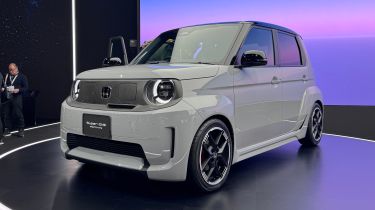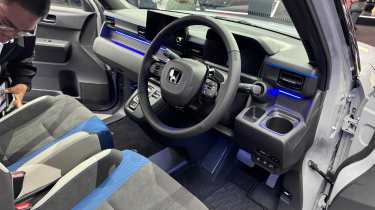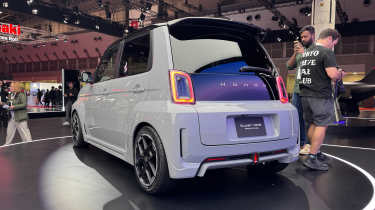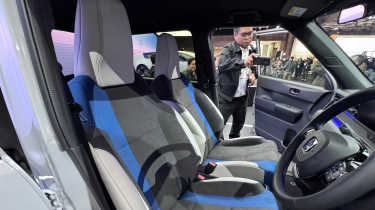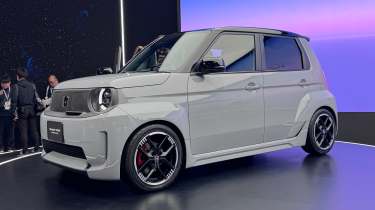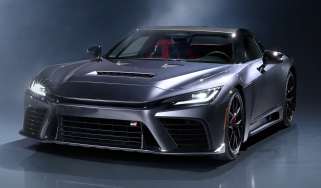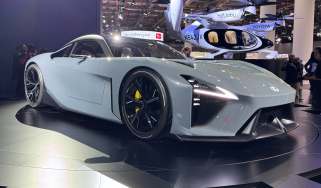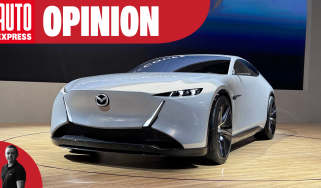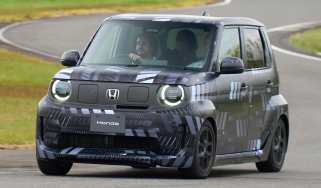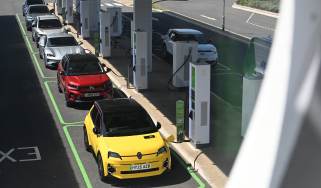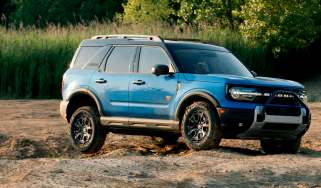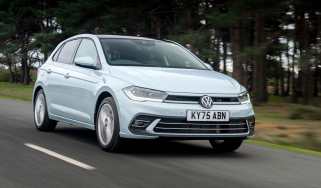Electric Honda Super-N set to storm the UK in 2026, undercutting rivals on price
Prototype of extrovert Honda Super-N EV revealed at Japanese Mobility Show, and it’s very close to the production model
Honda is back in the small EV space with the funky Super-N hatch, an affordable but fun-to-drive electric city car that will go on sale in the UK next year. The firm previewed the model at the 2025 Goodwood Festival of Speed, but it has now been revealed in full at the Japan Mobility Show, including some insights – if not much in the way of specific detail – into what’s under the skin.
Fundamentally, the new Super-N is based on the Japanese-market N-One e, an electric version of the brand’s popular kei car. However, Honda has made substantial changes to the UK-specification Super-N under the skin that will position the model as not just an efficient city car, but one that’s fun to drive, too.
How much will the Honda Super-N cost?
Honda has learnt its lesson with its first compact EV, the Honda e, and has confirmed that the Super-N will be priced ‘very competitively’ with low-cost EV options currently on sale in the UK. This suggests that the Super-N won’t rival cars such as the MINI Cooper E, instead it’ll undercut it significantly, with prices destined to slip underneath £25,000. While Honda's Super-N isn't currently available to order, rivals like the Hyundai Inster are all available via the Auto Express Buy A Car service with savings of up to £6,000.
This will see it rival cars such as the Fiat Grande Panda, Hyundai Inster and Renault 5, plus larger Chinese rivals like the BYD Dolphin Surf.
It will need to because the kei-car origins will have its limits when it comes to both interior space and electric range. However, Honda is keen to emphasise the Super-N’s character, which takes the cute and compact N-One as a base, and gives it a chunky, aggressive new look.
The Super-N’s Super Mario Kart-inspired styling
The Super-N’s key changes start with a wider chassis and larger wheels and tyres. As well as helping the handling, these elements endow the model with an aggressive design that sits atop the narrow and upright base car.
The nose takes some inspiration from the Honda e, but its friendly face has been replaced with a more aggressive look, thanks to new LED headlights and front air intakes. Its charging point is located on the nose, rather than on the bonnet.
There’s more style-led embellishment at the rear, but the car’s practical nature hasn’t been forgotten, thanks to an extremely low bootlid that will make loading easy. The square rear lights and basic shape remain faithful to the Japanese-market model.
What about the cabin?
Inside, the Super-N’s origins are clear, with a simple and space-efficient design. The upper dashboard has been taken straight from the Japanese model, but this is good news because Kei cars are extraordinarily space efficient.
The design is very lean and simple, with two small displays: one handling the infotainment and the other the main driver’s display. Running along its entire length is a small shelf, with a larger bin to the right-hand side of the driver.
The gear selection buttons are mounted on a little outcrop, and between the unique seats is a small cubby with a single cup-holder and storage tray. Even the most clever packaging can’t disguise the fact that the Super-N’s cabin is very narrow, though.
The seats are unique to this new model, and feature retro-inspired bolsters and materials. But the second row is destined to be cramped, and strictly for two.
What about the powertrain?
This is where Honda is keeping its cards close to its chest (for now), because no battery size, performance outputs or range estimates have been revealed – we’ll have to wait for an early test drive for those figures. However, the company has been busy integrating a clever ‘Boost’ mode that should make this little EV lots of fun to drive.
As well as sharpening the throttle response and upping performance, the Boost setting also introduces Hyundai Ioniq 5 N-like fake engine noises and gearshifts. This mode is activated by a small switch on the steering wheel, and there are paddles attached to ‘virtually’ swap gears as you drive along.
The success of such systems varies depending on how natural they feel, but this will be a unique offering for the small EV class when the Super-N arrives, and definitely suits the car’s rambunctious image.
In terms of range, though, we suspect it’ll be unlikely that this model will match its key competition, which isn’t surprising given its unashamedly urban focus. The Japanese-market Honda N-One e on which the Super-N is based is quoted as being able to reach around 167 miles from a charge. This probably isn’t too far away from the Super-N figure.
What else do we know from the Super EV concept?
Honda says the Super Concept was “designed as an A-segment compact EV that realises both practical usability and the ‘joy of driving’ only Honda can offer”. It’s claimed to leverage “a sporty and highly responsive driving experience distinctive to compact vehicles”, to provide an “uplifting, heart-pounding driving experience”.
Little else is known about the specific technical capabilities of the Honda Super EV at this stage, but it fits neatly with our scoop from the 2025 Consumer Electronics Show (CES) in January, when we reported on the firm’s plans to launch a replacement for its now-defunct electric Honda e city car, which was removed from sale in 2023.
At the time, Honda’s chief officer of automobile operations Katsushi Inoue told us the brand was “at the development stage” and that “eventually, in the future, [Honda] will talk about smaller vehicles”.
It turns out that the “future” has arrived, because just half a year on from CES, the company has shown its possible rival to the latest MINI Cooper and Fiat 500e, as well as budget newcomers such as the BYD Dolphin Surf and Citroen e-C3.
How does the Super EV fit into Honda’s electric car plans?
Inoue told us at CES that a future Honda sub-£30,000 EV would need to sit outside the brand’s new seven-car 0 Series platform, confirming that the architecture wouldn’t support anything smaller than a Honda Civic-sized family hatchback. “We are thinking about it away from 0 Series,” he said.
Of the seven cars confirmed under the 0 Series plan between now and 2030, the SUV and saloon will reach global markets from next year, with a baby SUV to be revealed in 2026 – at this stage only confirmed for Asian markets, although Europe is a possibility. A larger seven-seat SUV in 2027 is likely to be only for the US market.
Beyond that, a small SUV is expected in 2028, a year ahead of another smaller SUV, plus a compact saloon by the end of the decade.
Although China and Japan are the target markets for the smallest SUV coming next year, Honda’s BEV general manager Mitsuru Kariya admitted that he would like to see the baby electric SUV come to European markets as well.
Did you know you can sell your car through Auto Express? We’ll help you get a great price and find a great deal on a new car, too.
Find a car with the experts

